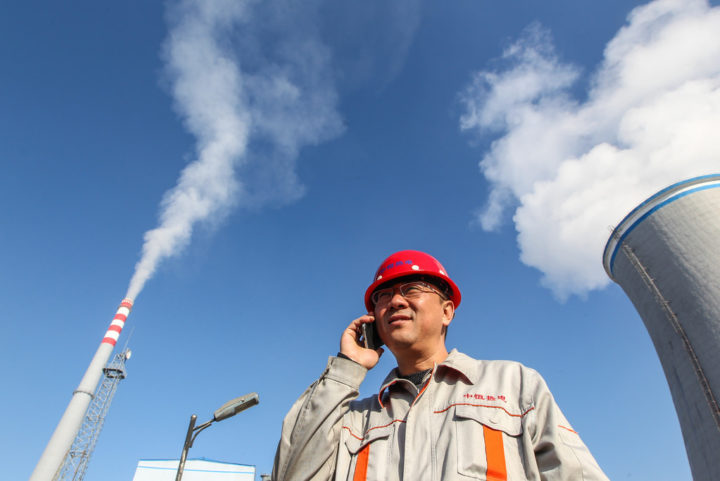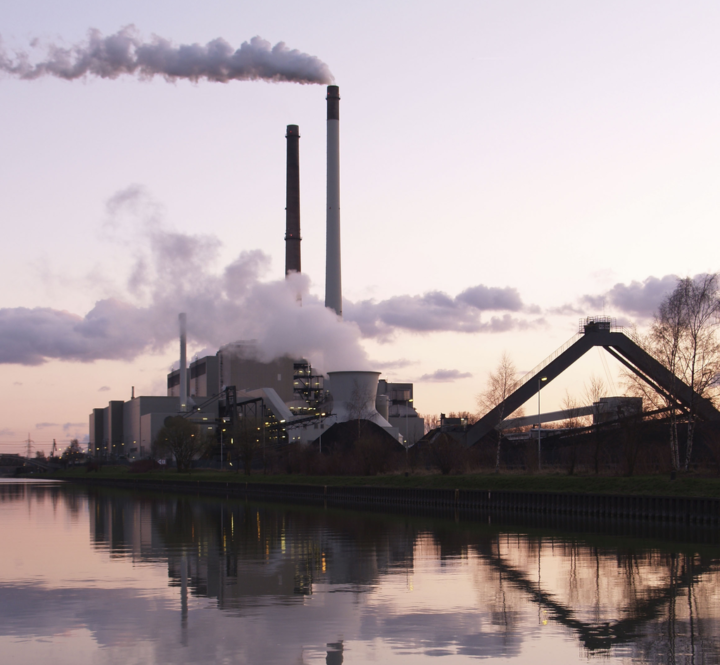Cutting energy waste: Does China's new market show the way?
As the UK searches for an effective energy efficiency policy, could China point the way?
By Jonny Marshall
Share
Last updated:

China’s National Development and Reform Commission recently announced that it will begin a trial cap-and-trade system for energy consumption in four provinces next year. Based on a similar ethos to the (often maligned) EU emissions trading scheme (ETS), or the UK’s own Renewable Obligation Certificate (RO) scheme - and yet different from both in important ways - it could cause sizeable ripples in Chinese energy consumption, and therefore directly affect the emissions pumped out by the world’s largest polluters.
Cap-and-trade systems operate by auctioning or issuing a limited number of permits, which correspond to the ability to (in this case) consume energy. This is where the new Chinese scheme differs from others, such as the EU ETS, which trades permits to emit carbon dioxide.
Companies that use less than their pre-purchased quota of energy are able to sell excess permits to those looking to use more, creating a market which encourages increased energy efficiency: if all companies look to overshoot their allowance, permits will become scarce and their price will rocket. Sloppy energy use and the need to accrue more allowances will feed through into profits, prompting a harsh discussion between the energy manager and CEO.
Rapid growth in Chinese energy consumption has been one of the largest economic drivers of the past decade, with China now accounting for almost a quarter of global energy demand and widely forecast to continue growing. As the world’s largest emitter of greenhouse gases, progress in China is vital to the success of global efforts to combat climate change. China is already aiming to begin an emissions trading scheme during 2017, covering carbon dioxide produced when electricity is generated. In contrast, the scheme covering consumption will consider the direct and indirect use of all energy (except self-generated renewables, which are exempt to encourage their proliferation).

Closer to home, the degree to which the European emissions trading system has worked is a contentious issue. While emissions have fallen since its introduction in 2005, critics argue that this is due to the shock of (and slow recovery from) the 2008 financial crisis. Permits are currently changing hands for less than €5 (£4.30) per tonne, down from €30 (£26) per tonne shortly after the scheme began. This is considerably below the price needed to encourage the switch from coal to gas-fired power generation, with some member states that rely heavily on coal for heavy industry and power generation happy for it to continue this way.
The UK is clearly on another path. Coal power is on the way out and offshore wind installations are booming. We have taken unilateral action to boost the cost of carbon via the carbon price floor, which has helped persuade utilities to favour gas over coal. This week Drax and SSE – two of the UK’s largest coal-burners – backed continuation of the scheme, both as a means of limiting emissions and in the name of much-needed policy continuity.
Steady price increases have seen the effect of the carbon price floor strengthen, eroding the profitability of more polluting power stations and re-directing investment into low-carbon technology. In a system designed to constrain energy consumption, careful management of permit numbers could continue the trend of falling energy consumption in the UK.
Current UK energy use stands at 202.5 million tonnes of oil equivalent (mtoe) per year, down from more than 235 mtoe in 2005. Over the past five years, total consumption has been falling by an average of 2.25% per year.
The carbon price floor isn't the only issue driving energy demand to fall - others including good business practice of reducing waste, home insulation, and the changing nature of our economy. Total energy consumption is very difficult to forecast, and therefore not included in calculations underpinning the UK’s carbon budgets. However, continuing at this rate could see more than a quarter of energy use shaved off by 2030, and place the UK in-line with Germany’s target of cutting energy consumption by 50% by 2050.
By common consensus the UK currently lacks decent policies on energy efficiency. For homes, the unlamented Green Deal has been cast off, and ministers cast around for a replacement. And for businesses, there's very little. As the Energy and Climate Change Select Committee recently put it, energy efficiency has been "affected by inconsistent and unpredictable policy signals as policies have been chopped and changed".
Which raises the intriguing question of whether the UK, and indeed other western nations, might be looking to China's new trading scheme for inspiration.

There are, of course, several unanswered questions that could arise following its implementation alongside carbon trading, which is also due to go nationwide next year:
- Would carbon permits and consumption permits be interchangeable, considering the similarity of their goals?
- How would the contribution of behind-the-meter renewables be accurately monitored?
- Would an arbitrage opportunity open between the two markets, prompting the return of banks and trading houses to carbon markets?
- If one scheme becomes more effective than the other and changes market dynamics in the latter, would this be managed through regulation?
None of these can really be answered before the system is up and running.
Other countries are increasingly moving to implement unilateral action on emissions, through market mechanisms and regulations. For example, France is considering imposing a carbon floor price of €20-30 (£17-26) per tonne by 2020, increasing to more than €50 (£43) per tonne by 2030. Environmental ministers around the globe will likely be keeping an eye on China’s plans for this new market, potentially seeing it as an opportunity to boost energy efficiency should it be successful.
If imposed on a blanket scale, with no industries unfairly insulated or sheltered from the cost of permits, UK companies would be encouraged to boost their energy efficiency. While there are arguments against unilateral action of this sort – harming international competitiveness, for example – a new system could be introduced gradually, slowly restricting the number of available permits over several years to avoid any more unneeded sharp shocks to the economy.
Depending on the success of the scheme in China, implementing something similar in the UK could build on previous world-leading progress on energy and emission regulation. With the UK facing unsteady waters, increasing efficiency could provide a welcome jump start on the global movement toward decarbonisation.
Share